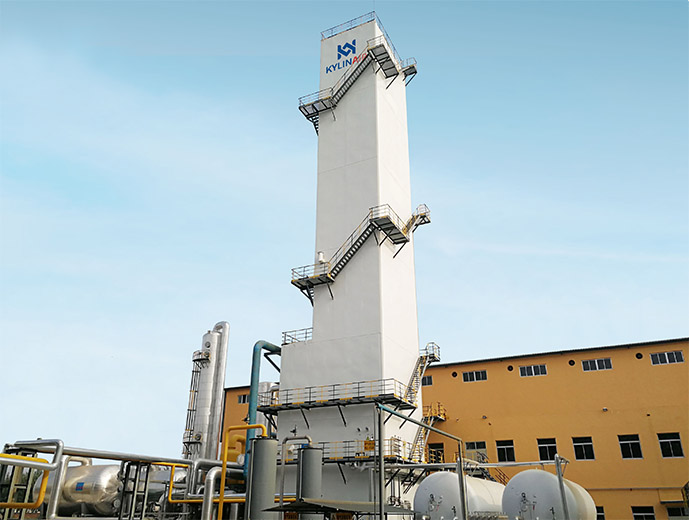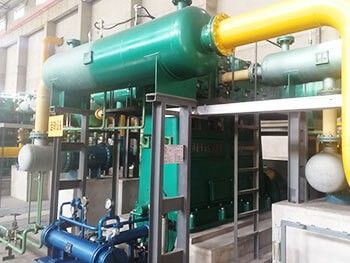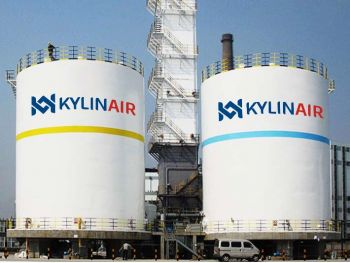Recent Posts
- Cryogenic storage tank delivery of Kylin Air
- 90,000 t/a LNG project —— completion of LNG cold box machine...
- Qinghai Hongyuan Gas 8200 air separation project was put int...
- A New Achievement to Boost Development
Related Products
Social Media
How does an air separation plant work?
Air Separation Plant
It refers to an industrial facility separating oxygen, nitrogen and other components in the air.
Equipment adopts air separation technology is called ASP (air separation plant) for short, with the cryogenic process of separating various components (oxygen, nitrogen, argon, helium and other rare gases) in the air. Generally, the air is compressed and refrigerated to a very low temperature, or liquefied by expansion, and then enters a distillation tower. For example, when liquid air boils, nitrogen (boiling point -196°C), which is more volatile, vaporizes first, so does oxygen (boiling point -183°C) later.
Cryogenic-based technology can be seen commonly, and relevant purity of oxygen, nitrogen and rare gases reaches 98.0%~99.9%. In addition, another system featuring adsorption by molecular sieve(details see pressure swing adsorption sub-page), produces oxygen-enriched air (70%~80% oxygen content). Air components leave great impression on all industry sectors, therefore, ASP is widely used in metallurgy, chemicals, petroleum, machinery, mining, food, military and so on.

Introduction of ASP System
It mainly includes the following steps:
1. Air compression: Natural air is firstly sucks in the air compressor, getting its pressure reached the range required for the normal operation of the whole plant, with an increasing temperature.
2. Air pre-cooling: Pre-cooling is indispensable for air liquefaction. Cooling water or ethylene glycol solution is took as the coolant to it down to nearly liquefying state.
3. Air purification: Before entering the distillation tower, it’s necessary to remove impurities such as water vapor and carbon dioxide by molecular sieve adsorbent.
4. Air expansion: Expansion is the further step to conduct liquefaction. Air in the expander losses heat energy to become nearly liquefying state, its mounting pressure reaching required one.
5. Oxygen and nitrogen separation: After pre-cooling, purification and expansion, the air enters the tower, separating oxygen, nitrogen and other components through distillation. The packing-structure and plates in the distillation tower make sense.
6. Product storage and supply: The outlet oxygen, nitrogen and other components are further processed and then stored and transported. The products are usually transported to the end user through pipelines or tank trucks.
7. Automatic control system: The operation of ASP requires an automatic system for monitoring and controlling key parameters in real time, such as pressure, temperature, liquid level, etc., and adjusting the operating status to ensure the stablity and quality.
8. Auxiliary system: In addition to the above main processes, the ASP also incorporates relevant auxiliary systems, such as water treatment system, electrical system, instrument control system, etc, providing support and guarantee for the normal operation.
Of course, there’s quite obviously a lot of synergy between multiple, exquisite systems and components, separating high-purity oxygen, nitrogen and other gas components from the air to meet the diversified needs of different fields.
Kylin ASU
With 20-year design and manufacturing experience, Kylin has always been devoted to developing complete equipment and industrial gas investment. Its business scope integrates scientific research and development, consulting services, engineering contracting, maintenance, refurbishment, installation and commissioning, offering all levels of gas solutions for the chemicals, metallurgy, petrochemical, water treatment, building materials and other industries. It worth noting that we has obtained a great number of technical patents and international certifications.




